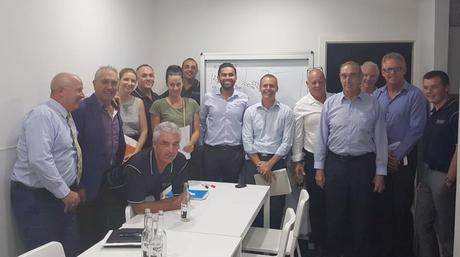Civil engineers and property dealers are well aware of how challenging their professions are. Land surveyors equally fulfil a lot of steps to accurately determine the location of the property line. Staying on their land is a major challenge to them. But the introduction and subsequent application of GPS surveying equipment have made surveying easier for licensed surveyors. They can understand their responsibilities better.

Licensed surveyors use GPS surveying equipment for there are many advantages of using the equipment. Likewise, they can guide the owners to construct their properties closer to the property line and not go over.
The main reason why licensed surveyors use GPS surveying equipment is to generate accurate results. Hence there are least to no chances of errors on the location. Even this equipment is very useful in restablishement survey. Alongside, neither the surveyor nor the owner needs to worry about the information provided.
When licensed surveyors use GPS surveying equipment, then they can help the owners avoid going over the property line. With this equipment, the licensed surveyors can find out the exact property line location, hence no risks of welcoming future conflicts. It helps in knowing where the property owners are about the property line or the land itself. It could be, someone is lost on the property, then with the help of GPS surveying equipment, finding the way back to the original location becomes easier.
How Do the Licensed Surveyors Conduct the GPS Surveying?
GPS surveying makes use of a similar technology to nearly all other GPS applications. Nevertheless, how the licensed surveyors are using them, differs significantly. Technology and usage are the two areas of primary differences.
a. Technology - Licensed surveyors use upgraded sophisticated technology for increasing the data accuracy that they collect. Comparing surveying receivers to those used in normal automotive navigation systems, they are noticeably more expensive and sophisticated. The ones used in surveying have high-quality antennas and advanced sophisticated calculation technology.
b. Data Usage - The licensed surveyors collect data from the GPS technology which are much different from the typical navigation system. Other than using location data for navigation, the data is used to measure between two points. To be used in a survey model, these measurements are first collected, then stored, adjusted, and finally displayed in a geographic information system, or GIS.
3 Surveying Methods The Licensed Surveyors Abide By
Here are the three GPS measurement methods the licensed surveyors use -
-
STATIC GPS BASELINE
Static GPS Baseline records the GPS observations simultaneously over a known and unknown survey point for a minimum of 20 minutes to determine the accurate coordinates for survey points. Then, the surveyors process the data in their office for providing an accuracy of better than 5mm depending on the observation duration and satellite availability at the measurement time, to their coordinates. -
REAL TIME KINETIC (RTK) OBSERVATIONS
In this process, one receiver remains in its one position over a known point, termed as the Base Station. The other receiver moves between positions, which is called the Rover Station. The Rover's position is computed and stored in no time by using the radio link to come up with a coordinate correction. This very method brings up a similar accuracy to baseline measurements within 10 km of the base station. -
CONTINUOUSLY OPERATING REFERENCE STATIONS (CORS)
Here, a GPS receiver of survey quality has been fixed permanently in a location that serves as the district's authorised GPS measurement starting point. Mining sites, major engineering projects and local governments commonly use CORS. The surveyors then use the GPS devices to assist in gathering field data and integrate it with the CORS data to determine positions.
Most industries in other countries are using a CORS network. Australian Regional GPS Network is Australia's CORS network which used the online processing system for delivering data over the Internet within 24 hours and giving positions within a few centimetres of accuracy. Local CORS networks are even useful at providing instant positions similar to the RTK method wherein a mobile phone data link is used for providing a coordinate correction to the licensed surveyors and their Rover.
The first commercial adaptations of GPS had been surveying and mapping since it provides a latitude and longitude position directly without any need of measuring angles and distances between points. GPS can check out the satellites and restrict usage near trees and tall buildings. The licensed surveyors practice by incorporating GPS technology into a Total Station for producing complete survey data. The receivers used to measure baseline are generally more complex and expensive compared to the ones commonly in use. These need a high-quality antenna.
